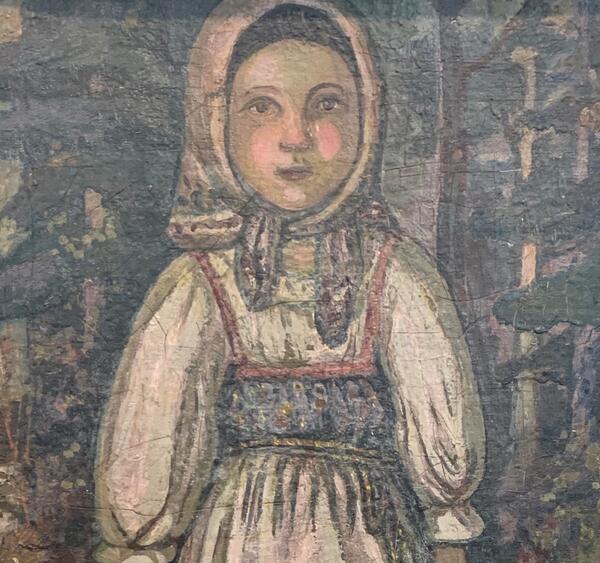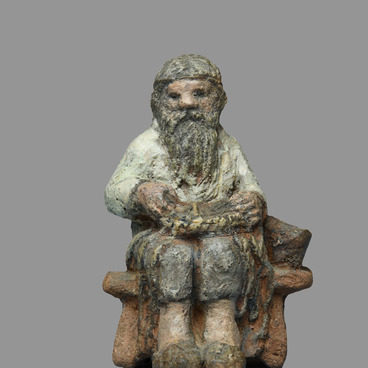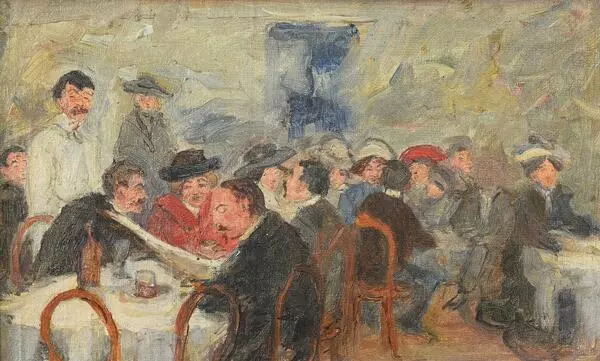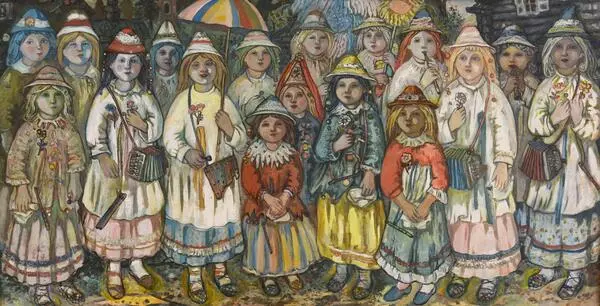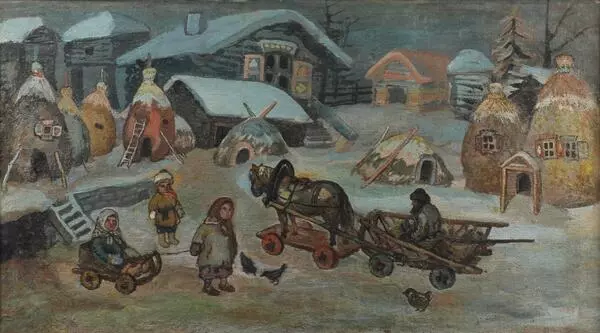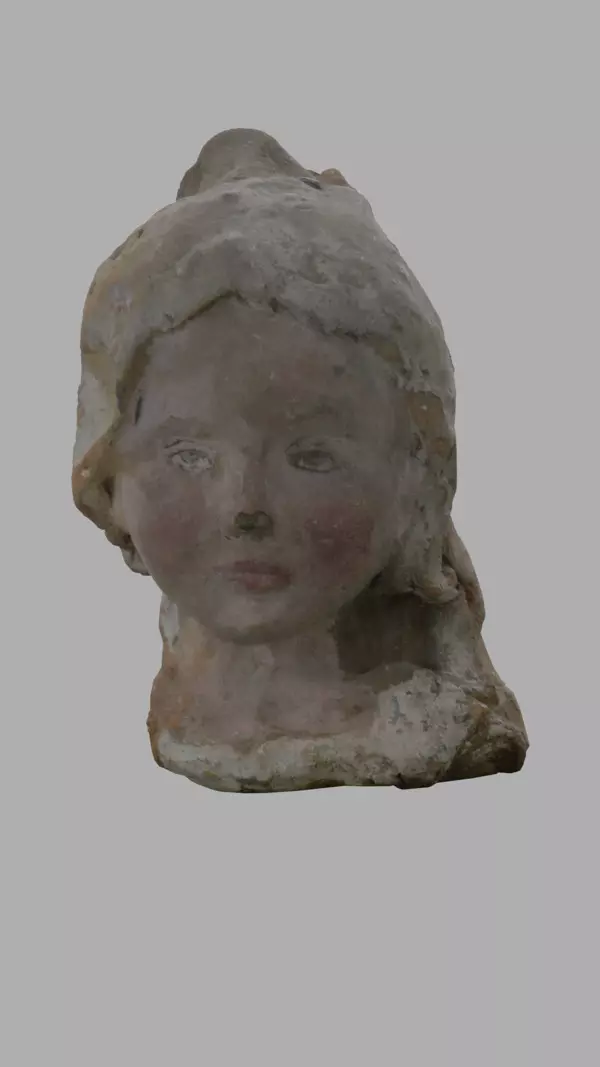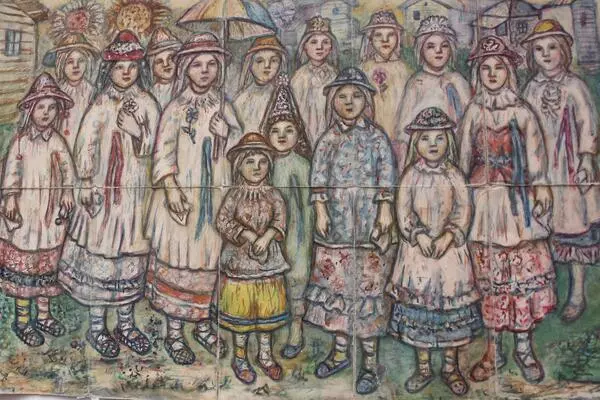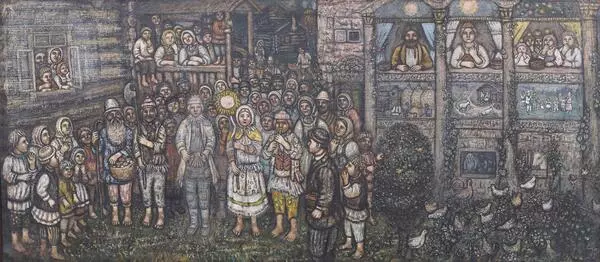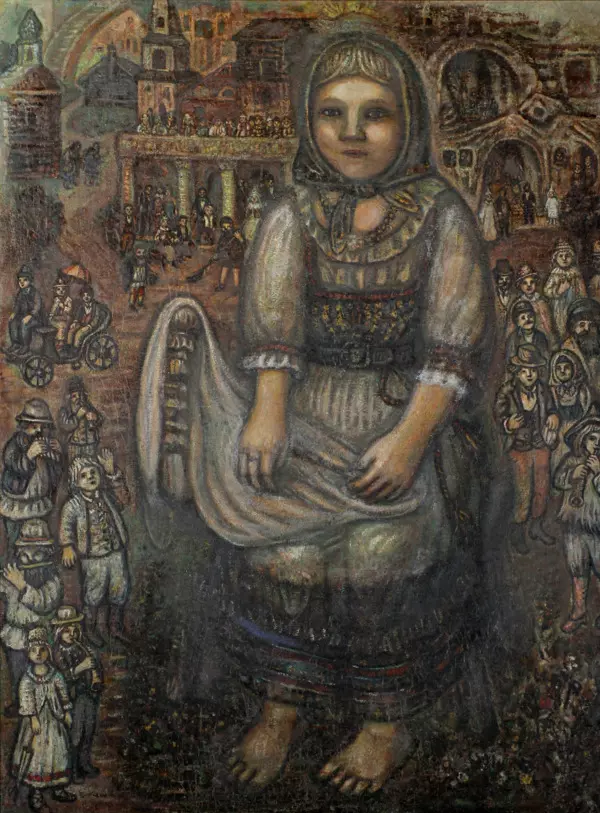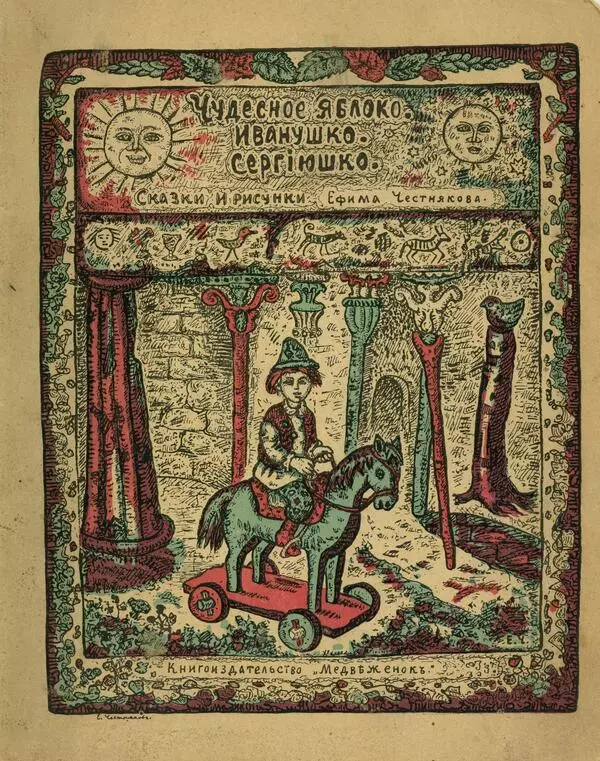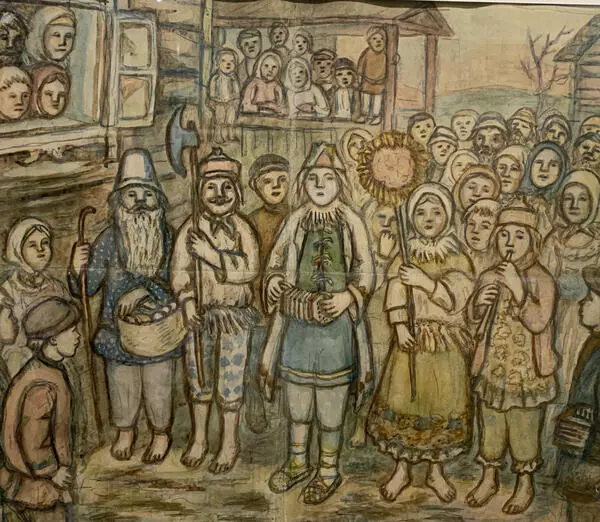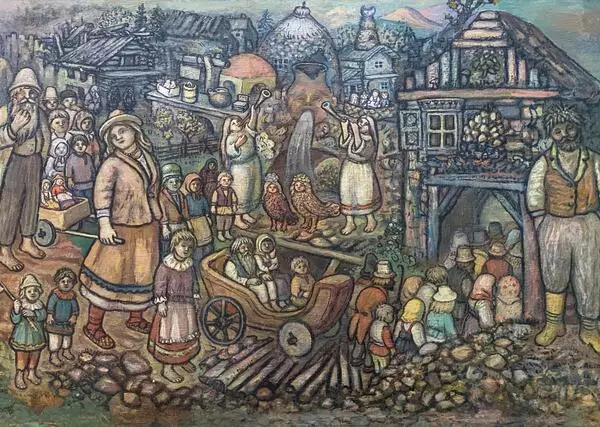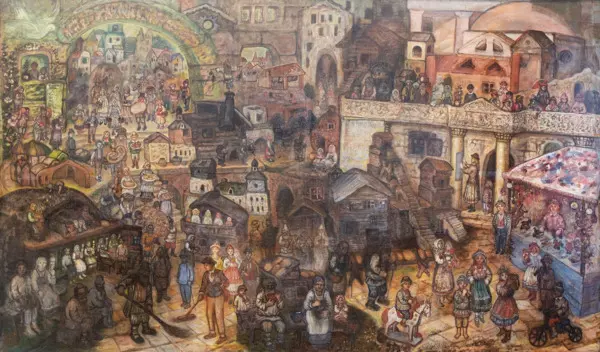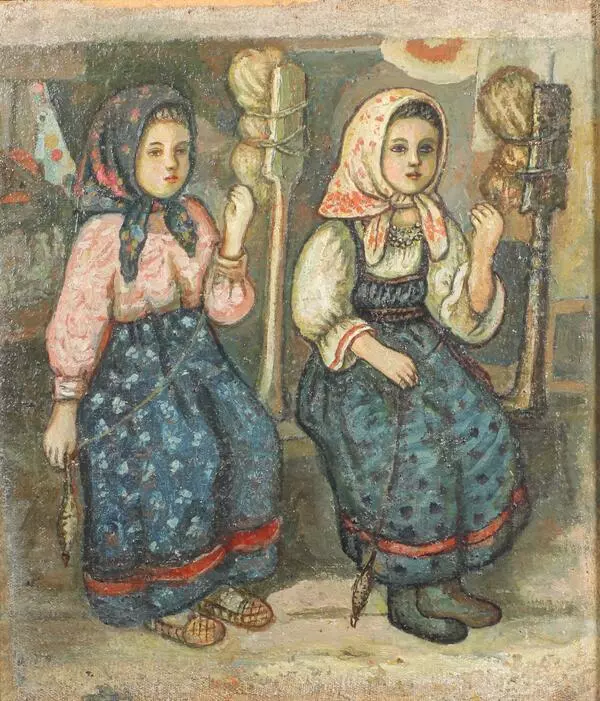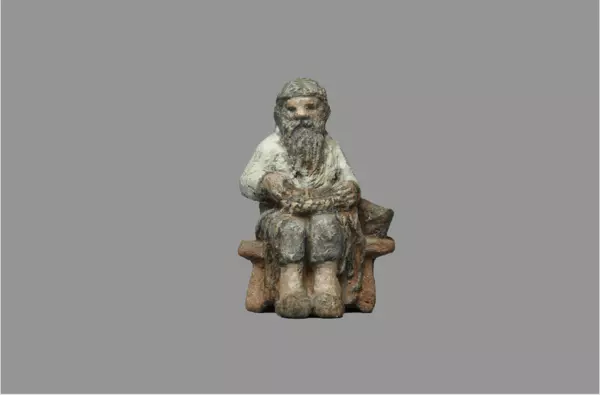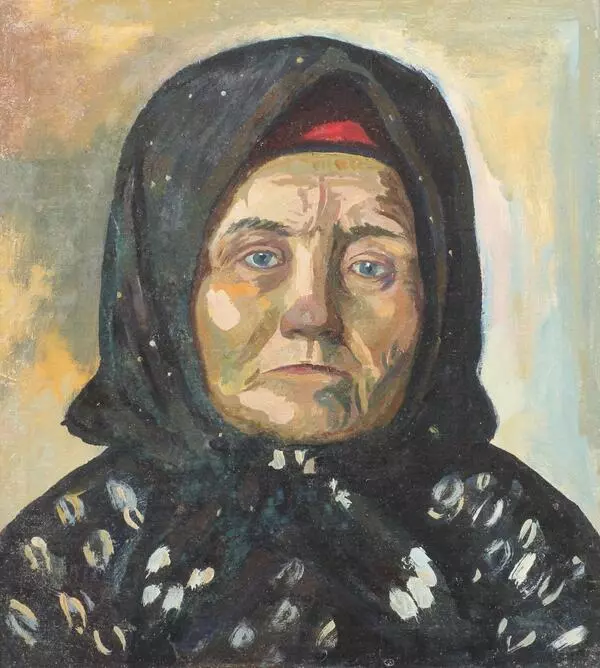In many of Yefim Chestnyakov’s tales and poems, just as in similar folk works of art, a human being is depicted as part of the natural world rather than the center of the universe. Nature’s gifts and its creatures help him survive in the harsh environment typical to a northern village situated in a forest. Russian peasants were surrounded by woods since birth. A forest provided them with warmth, protection and food. And it was also full of wonders. Forests played a special role in Yefim Chestnyakov’s art work. But the artist did not pay tribute to their magnificence and beauty by painting only them in the absence of humans.
The Painting “A Girl with a basket with mushrooms…” depicts a peasant girl who has come out of the forest with her basket full of mushrooms. Peasants’ children were accustomed to benefitting from riches of the forest and were not afraid of it. And the artist’s painting captures one’s imagination with its calm and natural beauty. The girl is standing in the grass that is already tinged with yellow and red colors of the approaching autumn. The forest behind her back, painted in shades of silver and green, does not look scary. The fair trunks of birch trees framing the girl’s body complement the shades of white of her blouse and pinafore. The sunlight reflecting off the grass, the light-colored clothing and the girl’s face add cheer to the painting.
There are many passages dedicated to the gathering of forests’ riches by farmers’ children in Yefim Chestnyakov’s literary works. The artist himself often spent time with children in a field near a forest, where he told tales, read poetry about wonders of the woods, and also taught them to truly see, understand and love nature. In one of his poems about mushrooms, not only does he list all their local varieties, but also includes descriptions and metaphors in it. Just as in his other literary works, Yefim Chestnyakov used the local dialect (of Pounzhenskiy region) with its characteristic features in the poem.
In a forest, after the rains,
There is an abundance of saffron and other milk caps,
Of brown cap and bovine boletes,
And of dog stinkhorns.
Fly amanitas are tricksters,
their appearance is meant to deceive.
Downy milk caps are attractive just
as young peasant women are.
And sweet slippery jacks and bearded milkcaps
have the vitality of curly-haired young men.
Old tree stumps are covered in mushrooms,
the smaller - in honey fungus.
Grey milk-white brittlegills
are the hermits under fallen trees.
While their sisters, the stinking brittlegills,
are bitter mushrooms indeed.
There is also the penny bun,
The true king of mushrooms in the quiet of the mossy shadows.
The velvet bolete is the old Tsar,
the elderly rainmaker.
The Painting “A Girl with a basket with mushrooms…” depicts a peasant girl who has come out of the forest with her basket full of mushrooms. Peasants’ children were accustomed to benefitting from riches of the forest and were not afraid of it. And the artist’s painting captures one’s imagination with its calm and natural beauty. The girl is standing in the grass that is already tinged with yellow and red colors of the approaching autumn. The forest behind her back, painted in shades of silver and green, does not look scary. The fair trunks of birch trees framing the girl’s body complement the shades of white of her blouse and pinafore. The sunlight reflecting off the grass, the light-colored clothing and the girl’s face add cheer to the painting.
There are many passages dedicated to the gathering of forests’ riches by farmers’ children in Yefim Chestnyakov’s literary works. The artist himself often spent time with children in a field near a forest, where he told tales, read poetry about wonders of the woods, and also taught them to truly see, understand and love nature. In one of his poems about mushrooms, not only does he list all their local varieties, but also includes descriptions and metaphors in it. Just as in his other literary works, Yefim Chestnyakov used the local dialect (of Pounzhenskiy region) with its characteristic features in the poem.
In a forest, after the rains,
There is an abundance of saffron and other milk caps,
Of brown cap and bovine boletes,
And of dog stinkhorns.
Fly amanitas are tricksters,
their appearance is meant to deceive.
Downy milk caps are attractive just
as young peasant women are.
And sweet slippery jacks and bearded milkcaps
have the vitality of curly-haired young men.
Old tree stumps are covered in mushrooms,
the smaller - in honey fungus.
Grey milk-white brittlegills
are the hermits under fallen trees.
While their sisters, the stinking brittlegills,
are bitter mushrooms indeed.
There is also the penny bun,
The true king of mushrooms in the quiet of the mossy shadows.
The velvet bolete is the old Tsar,
the elderly rainmaker.

